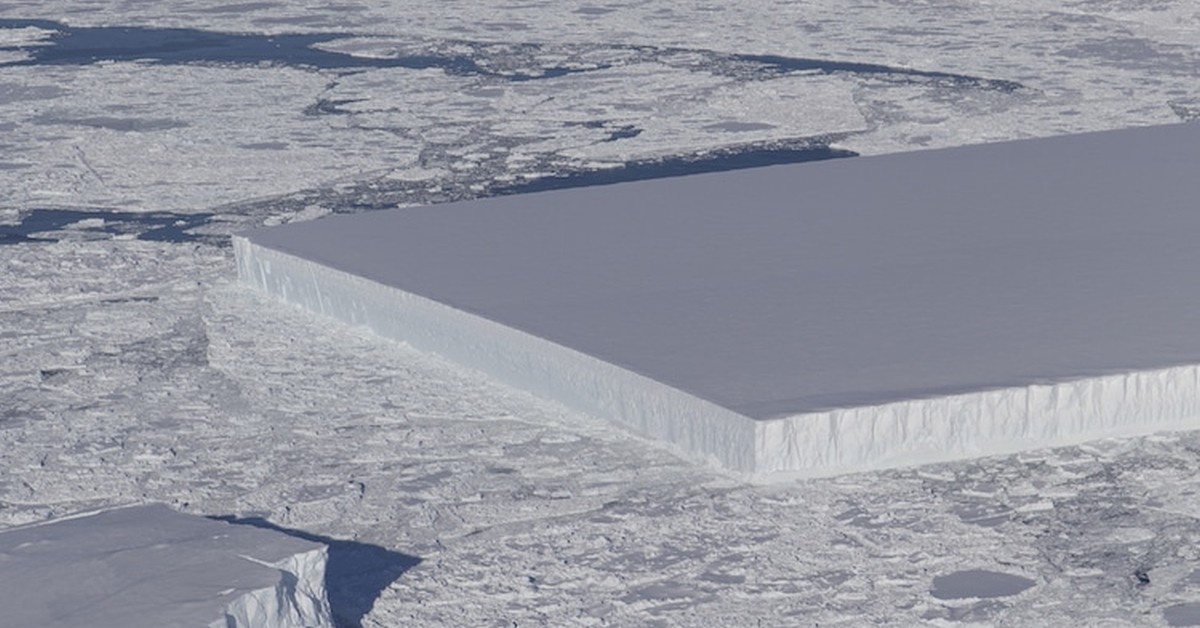Tabular icebergs aren’t uncommon, but this particular specimen is really something special.

Looking like a perfectly drawn rectangle, a peculiar iceberg in Antarctica made waves around the Internet when a photo of it was tweeted out by NASA. The incredible formation, which shows just how precise nature can be, was captured on camera by Operation IceBridge senior support scientist Jeremy Harbeck during a routine survey of the area.
Launched in in 2009, Operation IceBridge in an ongoing mission to monitor changes in polar ice. Harbeck spotted the rectangular iceberg in the Weddell Sea off Antarctica, and it appears to have detached from a larger ice shelf. This kind of formation, which has sharp, vertical sides and a flat top, is known as a tabular icebergs. Also known as ice islands, the largest icebergs in the world are typically tabular.

“I often see icebergs with relatively straight edges, but I’ve not really seen one before with two corners at such right angles like this one,” said Harbeck.
The rectangular iceberg is located next to the A68 iceberg, a Delaware-sized formation that calved (broke away) from the Larsen C Ice Shelf back in 2017.
Watch as Operation IceBridge flies over the area in question.
The A68 is one of the largest icebergs ever recorded, with a surface area of more than 2,200 square miles.
“I was actually more interested in capturing the A68 iceberg that we were about to fly over, but I thought this rectangular iceberg was visually interesting and fairly photogenic, so on a lark, I just took a couple photos,” Harbeck noted.
He even spotted a second rectangular iceberg in the vicinity.

After the Operation IceBridge flight over the area, NASA went back and looked for some more evidence. It turned out that the squareberg had a rougher birth than originally thought. Satellite images showed that it split from Antarctica’s splintering Larsen C ice shelf behind the much larger, curved A-68 iceberg and made its way north into clogged, icy water.
“The berg cruised all the way north and through a narrow passage between the A-68’s northern tip and a rocky outcrop near the ice shelf known as Bawden Ice Rise,” NASA said in a statement. “NASA/UMBC glaciologist Chris Shuman likens this zone to a nutcracker. A-68 has repeatedly smashed against the rise and caused pieces of ice to splinter into clean-cut geometric shapes.”

Over time, the iceberg lost its nice square shape and took on more of a trapezoidal formation. NASA said it will likely continue to make its way north, where it will melt.
Sources: 1, 2, 3
